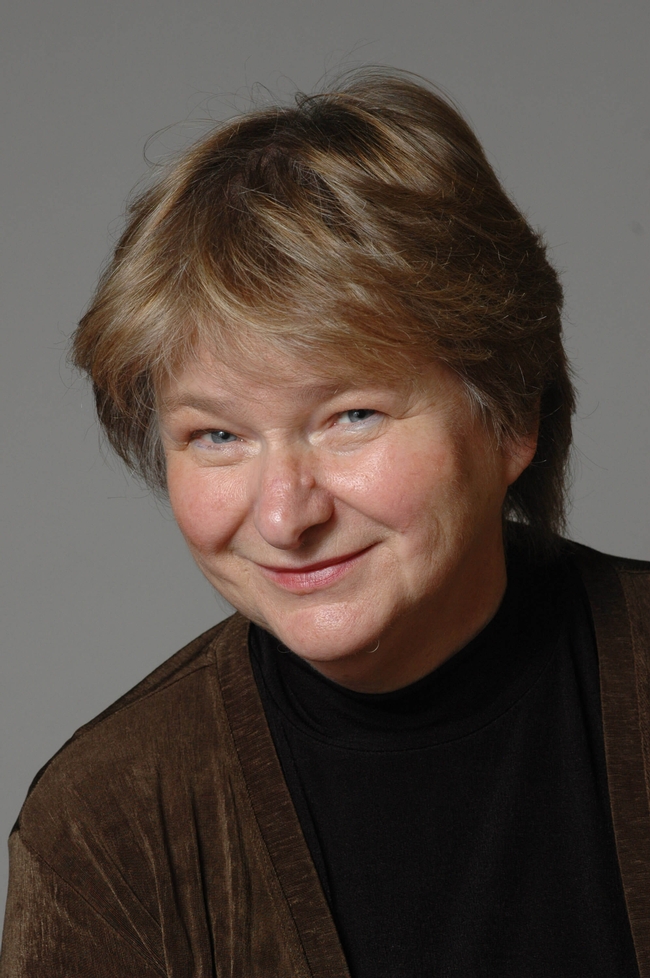
The San Francisco Chronicle reported this exercise in a 2016 interview with Crawford about newly approved USDA nutrition labels that would include added sugar information and thereby eliminate the need for such complex computations by consumers. Sadly, these nutrition guidelines have yet to come out. Why not, if we know that added sugar is related to heart disease, diabetes, tooth decay and other negative health conditions? Why hasn't this regulation been adopted? Crawford works to provide the research needed by policymakers to reduce the barriers to implementation of helpful policies such as this one.
Pat Crawford's work on improved food labeling is but one example of the way that for decades her timely and rigorous research has demonstrated the role of sugary foods and beverages in the development of diabetes, and obesity and in helping to fuel America's childhood obesity epidemic. In countless ways Crawford, who is retiring this year after more than 40 years of service at the University of California, has supported the adoption of public policies that promote safer, healthier food and beverages for all people, across the state and the nation.
You can draw direct lines from her resume to countless major policy advances in nutrition education and public health. Since earning her master's degree in public health nutrition and her registered dietician credential at UC Berkeley in 1972, Crawford has been a force of unceasing productivity as a researcher, an evaluator, an educator and a leader. Early in her career she managed the nation's largest biracial study of girls' health, the National Growth and Health Study. During the course of this long-term study, she went back to school to obtain her doctorate in public health nutrition. She soon was hired as the first UC Cooperative Extension Nutrition and Obesity Prevention specialist and she co-founded and directed UC Berkeley's Atkins Center for Weight and Health. The work of the center focused largely on food and nutrition policy to improve the health of children, and it provided a structure whereby University research could be effectively shared with community health workers throughout the state. Local and state health professionals found in the center an extension partner eager to conduct research that would answer important questions and provide real-world solutions, productively linking research, policy and practice.
The Center for Weight and Health, which in 2015 merged with the UC ANR Nutrition Policy Institute (NPI), became known for rigorous research that is aligned with UC ANR's core values of addressing food security, obesity, socioeconomically based health disparities, and access to healthy foods. After the merger, Crawford became NPI's Senior Director of Research, working with her long time collaborator, Lorrene Ritchie, the NPI director.
Ritchie stated that in addition to Crawford's academic achievements, she is the consummate mentor — a “career godmother” for Ritchie and many others. She said, “Pat has an uncanny ability of knowing what you are good at — even before you yourself do — and mentoring you to build on that strength. Likewise, she has an uncanny ability to know your weaknesses, and help you to overcome those by developing new skills or pairing you with others who have those skills.”
That kind of nurturing is rare, Ritchie noted, particularly in the competitive environment of academia. Through mentoring, she added, Crawford has ensured new generations of researchers will continue this work.
“Pat has proven that you can be caring and compassionate yet still be highly effective.”
Catalyzing change
What does highly effective look like? A few examples illustrate the impact that Pat Crawford's work has had on nutrition policies and trends.
To improve the food environment at child care centers and schools, the Center/NPI provided the evidence for:
- California's 2010 Healthy Beverages in Childcare Law, requiring child care centers to make water and other healthy beverages available at all times.
- The 2013 Foundations for Healthy Nutrition in Childcare Act, requiring nutrition education for all child care providers.
- “Competitive food” policies — banning unhealthy sodas and snacks that competed with more nutritious school lunches — a policy that started in California and later was implemented at the federal level in the USDA's 2016 “Smart Snacks Standards.”
- The expansion of school garden and cooking programs in California and nationwide.
- An expansion of support for replacing packaged foods with healthier scratch cooking in school cafeterias.
To promote more nutritious food in programs serving low-income families the Center/NPI advocated:
- Improvements in the federal Women, Infants and Children (WIC) program including quadrupling the amount of vegetables and legumes WIC provides and adding information about physical activity needs for young children.
- Food bank policies that increase the amount of fruits and vegetables distributed and reduce the amount of snack foods and sugary beverages. Their free online course on how to make these policy shifts is a popular web resource for food banks across the country.
To advance education and communication:
- Crawford co-founded the first interdisciplinary conference on childhood obesity. Twenty years later, the biennial meeting is the premier obesity conference in the nation.
- The “My Healthy Plate” nutrition-education tool, which replaced the old Healthy Eating Pyramid, was developed, tested, presented and promoted by Crawford and her extension colleagues before the plate concept was officially adopted by USDA in 2011.
- California became the first state to put calories on chain-restaurant menus. Crawford's evaluation of Kaiser Permanente's pilot study of menu-board labeling provided the evidence needed by policymakers. Calorie labeling in chain restaurants has been expanded nationwide.
- Crawford's evaluation of California's SNAP-Ed program, the education arm of the Supplemental Nutrition Assistance Program, (or SNAP, previously known as food stamps), has informed programming focused on the prevention of chronic disease through efficacious nutrition changes in the environment.
Although Crawford would be quick to tell you that her work is collaborative, she has been a researcher or important influence on nearly every population-based nutrition policy success. She has served as president of the California Nutrition Council and on countless state and national committees and task forces focused on improving health and addressing obesity, including being an advisor to California's Let's Get Healthy Task Force. Most recently, she co-authored a seminal Healthy People 2020 report for the U.S. Department of Health and Human Services, Office of Disease Prevention and Health Promotion, on model policies to increase fruit and vegetable intake in the population.
Training the next generation
Given her commitment and her influence, it's no wonder that Pat Crawford won the 2013 David Kessler Award for Extraordinary Contributions to the Public's Health, as well as multiple honors from the American Public Health Association. In 2018, the UC Berkeley School of Public Health honored Crawford as one of its 75 most influential alumni in recognition of her significant contributions to reduce the epidemic of childhood obesity in California and across the country. And she's not done yet — as an emeritus Cooperative Extension specialist, her research will go on. That won't surprise anyone who knows her. As Crawford said in a 2015 interview, “What keeps me passionate is knowing that change is possible when high-quality, policy-relevant research is conducted and communicated to decision-makers and those who work with children.”
To honor the work that Crawford does and to continue this kind of work, the Nutrition Policy Institute has established a student fellowship fund to train the next generation of students on nutrition research and its policy impacts. Donors to the student fellowship fund help honor Crawford and help NPI continue its work to improve the nutrition and health of children.

